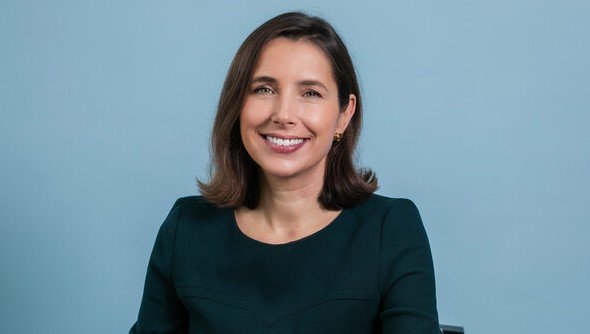Johanna Kyrklund: Charting the Course of Modern Investment Leadership

In the dynamic world of global finance, Johanna Kyrklund has emerged as one of the most influential figures shaping investment strategy and market thought leadership. As Group Chief Investment Officer at a major global asset management firm, she holds a pivotal role in defining how institutional and retail clients navigate the complexity of capital markets today.
Early Life and Educational Roots
Little is publicly known about Johanna Kyrklund’s private background prior to her professional ascent, but available records point to a robust academic foundation and early commitment to finance. She pursued a degree in Philosophy, Politics and Economics (PPE) at the University of Oxford, which is a rigorous interdisciplinary programme combining social science, philosophy and economics. That course of study has long been regarded as fertile intellectual ground for leadership in public life, economics, and finance. Over time, she also acquired professional credentials, including membership in or attainment of recognitions such as the Chartered Financial Analyst (CFA) designation, cementing her credentials in asset management.
This blend of philosophical, political, and economic training, coupled with analytical finance qualification, has likely shaped her holistic view of markets—not merely as numbers and returns, but as systems grounded in policy, psychology, global dynamics and capital flows.
Career Trajectory and Professional Milestones
Kyrklund entered the world of institutional investing, initially building her reputation in macro and multi-asset space. She held a senior role at Insight Investment, where she managed global macro absolute return strategies. This role exposed her to the challenges of managing volatility, hedging across asset classes, and navigating macroeconomic shifts.
Later, she joined a major global investment house, ultimately rising to lead its asset allocation efforts in the UK. Her capacity to combine macro foresight, thematic tilts, and risk management gained internal recognition. In 2019, she was appointed as Group Chief Investment Officer—a role with oversight of investment performance, philosophy and portfolio strategy across global public markets. In 2025, her influence grew further when she assumed executive directorship on her firm’s board.
Her ascent is noteworthy for how she has bridged traditional asset management rigour with forward-looking thematic focus, something increasingly necessary in today’s uncertain markets.
The Role of a Group CIO: Responsibilities and Influence
As Group CIO, Johanna Kyrklund guides what lies at the heart of an investor’s fate: how capital is allocated, risk is managed, and themes are identified. Her purview spans equities, fixed income, alternatives, multi-asset strategies, and sometimes private markets. She must:
- Establish and articulate the firm’s investment philosophy, ensuring that all portfolio teams align with a coherent worldview.
- Oversee portfolio construction frameworks, ensuring rigorous risk budgets, proper diversification and stress testing.
- Lead forward-looking market outlooks (economic, policy, geopolitical) and translate them into actionable themes.
- Engage with clients, investor relations, and the public, providing thought leadership to reassure, educate and build confidence.
- Challenge internal teams, promote innovation (for example, incorporating sustainability, ESG, or data science), and maintain competitive edge.
Her decisions thus ripple across thousands of institutional and retail portfolios, making her a key voice for global capital.
Investment Philosophy: Resilience, Diversification and Income
Resilience over Recklessness
A central theme in Kyrklund’s philosophy is the idea of resilience. She often emphasises that in uncertain regimes—geopolitics, inflation volatility, policy shifts—the capacity of a portfolio to endure stress is more valuable than chasing speculative upside. Resilient portfolios hold assets that can buffer shocks across interest rate spikes, tightening liquidity, or macro surprises.
Diversification beyond the Obvious
Diversification in her view is not mere “don’t put all eggs in one basket,” but designing exposures that respond differently under varying regimes. She favours not just geographic or sector diversification, but thinking in return regimes. For instance, combining value with growth tilts, fixed income with real assets, short-duration and inflation hedges, opportunities in income-generating instruments. This layered approach seeks to capture upside while limiting downside in adverse markets.
Income as a Pillar, not an Afterthought
In an era when interest rates and yields matter more than ever, Johanna Kyrklund emphasises that income is not just a byproduct but a core ingredient of total return. She frequently highlights how bond yields, credit spreads, dividend income and real asset cash flows can provide ballast when capital appreciation is challenged. Rather than chasing speculative growth at all costs, anchoring with income helps portfolios sustain in more volatile environments.
Market Views and Insights
Outlook 2025: Themes and Risks
Within her published views and public commentary, Kyrklund has regularly pointed to several structural themes and key risks for 2025 and beyond:
- U.S. Exceptionalism and Divergence
The U.S. economy and markets may continue to diverge favorably compared to other regions, driven by technology leadership, the dominance of AI and digital infrastructure, strong consumption, and policy support. Yet she also cautions against complacency and the need to balance exposure with global diversification. - Policy Regimes and Inflation Dynamics
Central bank policy—interest rates, quantitative tightening, forward guidance—remains a central wiring in market response. Jerome Powell or global equivalents may tighten or pause, but the legacy of previous inflation may linger. Kyrklund often draws attention to the potential for inflation surprises, sticky supply shocks, and how tightening cycles may not be linear. - Rebalancing in a Higher-Rate World
After years of ultra-low rates, portfolios may need to rethink positioning. Low volatility equities or bond proxies may face headwinds. She encourages rebalancing toward areas that can benefit from a rising rate, or at least are rate-agnostic. Real assets, inflation-linked instruments, carefully selected credit, and tactical allocations gain importance. - Idiosyncratic and Tail Risk Vigilance
She tends to highlight not just the consensus risks, but lesser-discussed tail risks — geopolitical surprises, sudden credit spreads widening, regime shifts in trade, supply chain realignments or energy shocks. Robust cushions and optionality are integral in her framework. - Technology, ESG and Structural Change
While not abandoning sustainability or technology, Kyrklund often underscores the need for discipline. ESG integration must avoid becoming a marketing façade; instead, it must be rooted in materiality and capitals. Meanwhile, technology’s influence (AI, quantum computing, digital infrastructure) must be evaluated in both opportunity and disruption terms: winner takes much, and the pace of change can unseat incumbents quickly.
Public Communication and Thought Leadership
A distinguishing feature of Johanna Kyrklund is how she engages in public dialogue. Through regular market outlooks (often branded “CIO Lens” or similar), she offers market participants a structured framework for what she sees, what she fears, and where capital should tilt. Her commentary style balances confidence with humility — she is candid about what is knowable and what is uncertain.
Her presence in interviews, debates and public forums gives her dual roles: portfolio leader and intellectual interlocutor for the investing public. In a world awash with noise, she cuts through by connecting macro trends to tactical allocations.
Critiques, Challenges and Counterpoints
Challenge of Predictive Hubris
All forecasts carry risk. As a CIO, Kyrklund must guard against overconfidence. The more public visibility any investment leader has, the more their errors are spotlighted. Misreading inflation trajectory, policy shifts, or market sentiment can lead to perception of disappointment.
Balancing Innovation vs. Tradition
Her commitment to discipline may sometimes clash with demands for cutting-edge innovation. For instance, how aggressively to deploy AI, alternative data, or new structural products can be politically sensitive inside large firms. The tension between change and stability is ongoing.
Client Expectations and Behaviour
Investors often demand simple, bold calls or high returns, especially in bullish cycles. Reconciling clients’ expectations with a philosophy of defensive resilience or sceptical caution is a balancing act. She must communicate clearly, educate, and build trust to dissuade her teams or stakeholders from chasing fads.
Case Studies of Strategic Tilts
Pivoting in Inflationary Regime
When inflation pressures rose sharply in recent years, portfolios guided by Kyrklund’s framework often reduced duration, added inflation-linked bonds, shifted into real assets or commodities, and trimmed rate-sensitive equities. Those tilts would have helped cushion against bond sell-offs and rate shocks.
Navigating U.S.–China Tensions
In markets where geopolitical tension looms, her multi-asset framework would likely favour tactical hedges, reducing exposure to firms with major China dependency, and reallocating toward regions or sectors less vulnerable. Though this introduces opportunity cost, the risk mitigation is core to her resilience ethic.
Metrics of Influence
A Barometer for Institutional Capital
Because she oversees multi-billion-dollar assets, her views influence flows, investment committees, institutional strategies. A tilt she takes or a view she voices can set off rebalances in pension funds, sovereign wealth funds, mutual funds across regions.
Intellectual Capital and Media Presence
Her regular commentary, interviews and presences at industry summits make her a bellwether for how smart money thinks. Market participants, researchers, and media outlets often quote her views when summarising consensus or dissenting voices in strategy.
Why Johanna Kyrklund Is a Name to Watch
- Bridge Between Macro and Execution
She does not merely forecast. She translates macro and thematic views into portfolio structure, risk budgets and tilts, which is a rarer and more valuable skill. - Steward of Long-Term Capital Discipline
Her emphasis on resilience and income over chasing simplicity or speculative returns offers a stabilising anchor in uncertain times. - Thought Partner for Investors
Her regular public voice gives clients comfort that strategy is not behind closed doors, but thought through, explained and challenged. - Leadership in Evolving Investing Regimes
As markets evolve—higher rates, inflation dynamics, technological disruption—her ability to recalibrate frameworks will matter more than static models based on past decades.
What Investors Can Learn from Her Approach
Embrace Scenario Thinking
Rather than base forecasts on a single “best guess,” consider multiple economic or market regimes (stagflation, soft landing, geopolitical crisis) and build cushions or optionality for each.
Anchor with Income
Don’t let return chasing eclipse the importance of what the portfolio throws off. Income components can lend stability, buffer drawdowns, and support reinvestment even in volatile markets.
Be Humble and Flexible
Maintaining room to change one’s mind, cutting positions that no longer serve, and avoiding rigid allegiance to predictions are core to her mindset.
Communicate Intelligently
Investors, stakeholders, clients often act capriciously with emotion. Clear, frequent communication about assumptions, risks and rationale helps build trust and composure in turbulent times.
Potential Future Directions
- Deeper Private Markets Integration
As institutional capital flows increasingly into private equity, infrastructure, credit, she may expand her oversight or views in those realms, balancing liquidity and return trade-offs. - Technological & Data Innovation
Closer incorporation of machine learning, alternative data, scenario simulation tools could sharpen predictive edge and risk modelling. - Sustainability and Climate Integration
Though she treats ESG carefully, she is likely to increasingly fold climate risks, transition themes and green capital deployment into her strategic worldview — not as buzzwords, but meaningful risk and return drivers. - Thought Leadership Expansion
She may grow her public influence further — publishing white papers, guiding industry thinking on systemic capital challenges, or shaping regulatory dialogue on investment stewardship.
Conclusion
Johanna Kyrklund stands at the nexus of intellectual rigour and investment execution. Her ascent to the position of Group CIO with executive directorship is evidence of her capacity to think broadly, act strategically and lead portfolios through unknown markets. Her philosophy—grounded in resilience, income anchoring and scenario discipline—offers a counterpoint to impulse, overreach and fascination with the latest trends. For investors seeking strategic compass in volatile seas, her views and framework offer both stewardship and inspiration.



